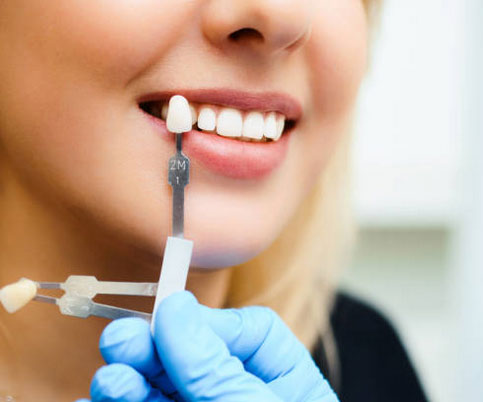- About
- What We Do
- What We Help With
- Services
- Before & After
- Cosmetic Teeth/Gum Solutions
- Blog
- Contact Us
- Book Now
Crowns
A crown, also known as ”cap”, is a tooth-like covering placed over a carefully prepared existing tooth. It strengthens, restores or improves the appearance of a tooth. It covers the entire visible part of a teeth to protect it the way a full face helmet protects a head. It is most commonly used when there is no longer sufficient tooth structure left to place a filling.
How do you benefit from a dental crown?
- Dental crowns are a form of cosmetic dentistry that can dramatically improve the appearance of your teeth.
- They can cover misshapen or severely discoloured teeth.
- Restore broken down or worn teeth.
- Crowns can replace missing teeth when placed on a dental implant or joined together as a bridge.
- Protect root treated teeth or other weakened teeth from breaking.
- Hold together parts of a tooth with microcracks or a tooth with a large filling.
- Restores function allowing natural chewing and prevents tooth movement into unoccupied space.
- Looks completely natural. Porcelain crowns or new reinforced resin are considered to be the most aesthetically pleasing as it is easily matched in colour to the surrounding teeth.

Crowns are used to strengthen a tooth and repair badly decayed, broken, severely discolored, misaligned teeth or root treated teeth. Crowns may also be used to protect the structure of a tooth that is fractured or broken. Crowns completely cover teeth, restoring them to their natural color, size, shape, and function. The location of the crown in the mouth usually dictates the type of material used. Crowns have a much longer life span than bonding, resist stains better, hold their color and resist chipping and cracking. Crowns, however, take longer to prepare than bonding and are not reversible.
Inlays and onlays are similar to a partial crown, most often made of porcelain. An inlay substitutes for a filling, while on onlay covers more than just the tooth’s surface. An onlay usually replaces a filling and covers one or more of the tips of the tooth.
Dental crowns last between 5 and 15 years. The life span of a crown depends on the amount of wear and tear the crown is exposed to, how well you follow good oral hygiene practices, and your personal mouth-related habits. Grinding or clenching your teeth, chewing ice, biting your fingernails and using your teeth to hold objects should be avoided.

Tooth Preparation
The tooth is reduced in size to allow it to be crowned. After the tooth is prepared, a temporary crown is placed on the tooth while the crown is fabricated in the lab. If the tooth is severely decayed, little tooth structure remains or after root canal treatment for the back tooth, it may be necessary to place a metal post into the tooth to support the crown. If this is the case, root canal therapy will be performed. Once the crown returns, it is permanently cemented over the reduced tooth.


Specialised Dental Services
Preventive & Elective Dental
© 2021 Cosmic Smile Pty Ltd – 02 9904 2880
info@cosmicsmile.com.au
Dentist Neutral Bay Sitemap
Address: A: 212/40 Yeo St., Neutral Bay NSW 2089,
Australia
P: 02 9904 2880
